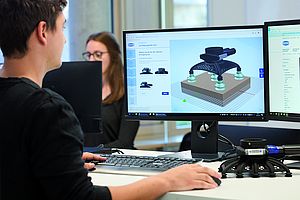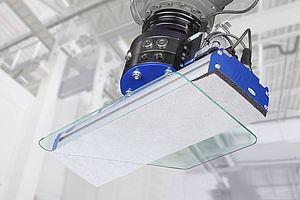J. Schmalz GmbH develop a gripper solution that ensures a safe human-robot collaboration (MRK) thanks to its unique product design. The Cobot gripper has a wide range of uses in intralogistics, such as end-of-line packaging or pick-and-place applications. Using flexible foam as a gripping surface, the device can safely hold cardboard, boxes and structured components or components with recesses and three-dimensional outer shapes weighing up to eight kilograms. Thanks to its communication technology, it can also be easily integrated into automation environments.
WEIGHT CHALLENGES
Collaborative robots pose new challenges for their system components: they must be lightweight because they often have lower working loads and must not pose any danger to humans. Thanks to the increased contact surface and reduced impact forces, the gripper fulfills the requirements of ISO TS 15066, a standard for cooperation between humans and collaborative industrial robots. The additive manufacturing processes ensure weight optimization and dynamic geometry. This makes it possible to connect the gripper to the small robots with lighter load bearing capacities.
MODULAR DESIGN
The gripper has a modular design so that it can be supplemented with, for example, energy-saving ejector modules or intelligent vacuum switches for process monitoring. The same gripper can be used for a variety of different applications. Partial gripper coverage is also possible. The vacuum can be generated both internally and externally depending on the circumstances of the user on site.
EASY AND SAFE
On the whole, demand for flexible solutions and plug-and-play solutions is increasing. Even untrained employees should be able to install the components quickly and easily, allowing them to grip products that were often not specified in advance. Safety is a crucial factor since the boundaries between manual work and robots are becoming increasingly blurred.




















